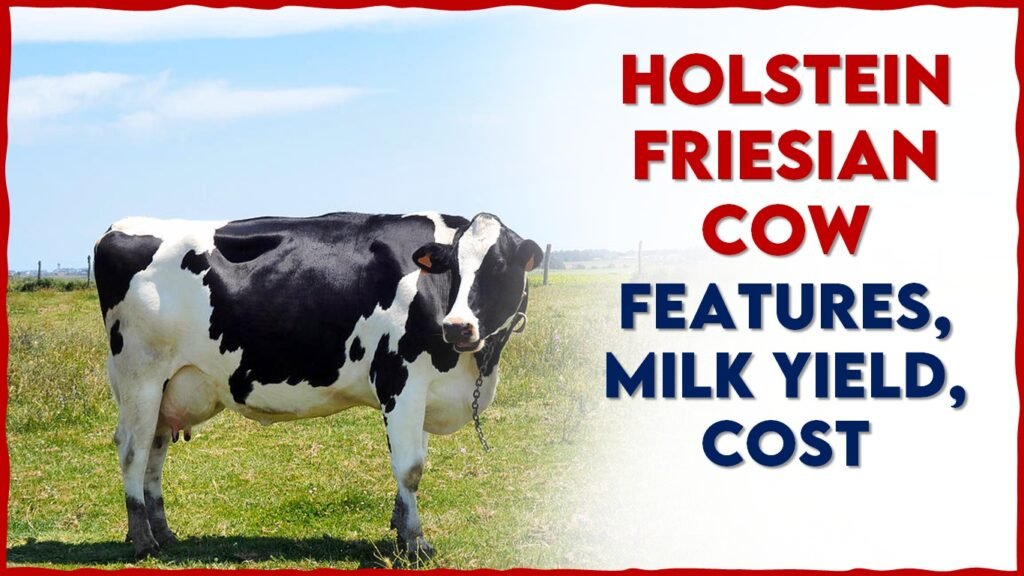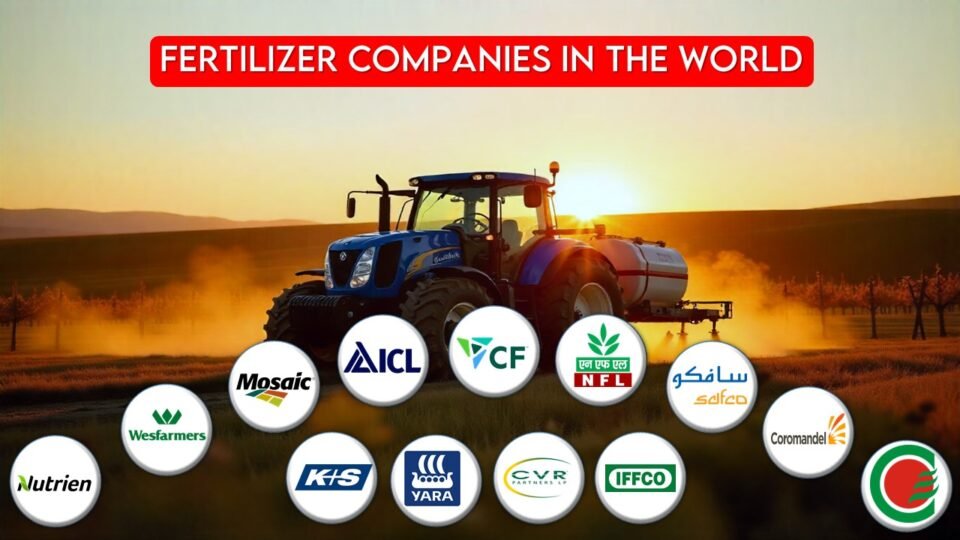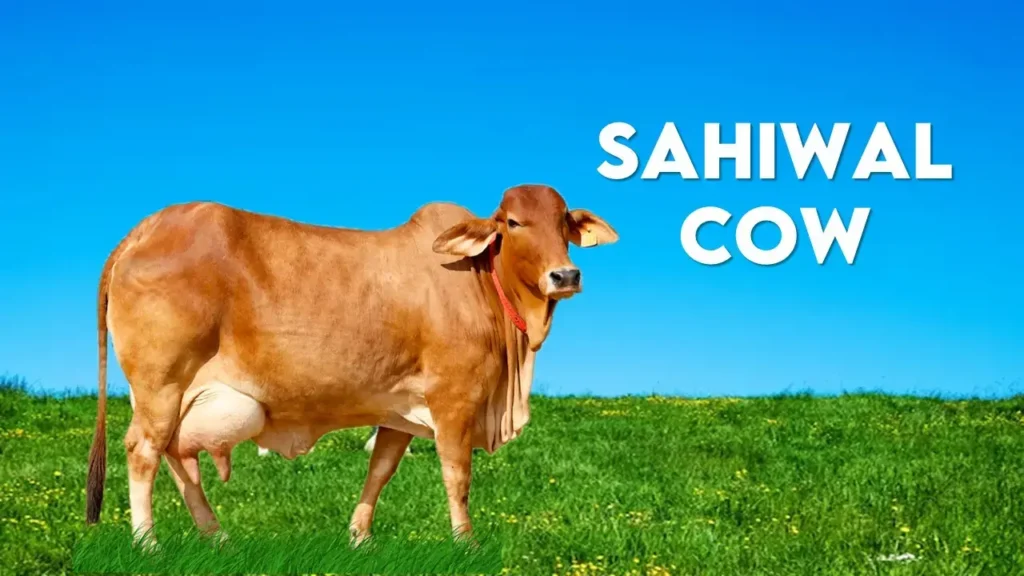HF cow, the short form for Holstein Friesian is the cattle breed that comes to your mind when you think about dairy cattle breeds. Such is the dominance of this breed in the dairy industry, that it has become an international dairy breed found in every commercial dairy farm in the world.
Perhaps you may know the appearance of these animals more than its name. HF cows are beautiful animals with black and white coat colors. These cows are like celebrity among dairy cow breeds. They are featured in the packages of dairy products like milk, butter, ghee, curd, etc. grazing on lush green pastures. More than their infamous visual attributes, there is so much to learn about these breeds.
So the questions that immediately come to our minds are What is Hf cow? Why is it so popular?
Origin of HF cow breed
The Holstein Friesian originated in Frisia, an area that stretches between Northern Holland and Schleswig-Holstein in Germany. Hence the name Holstein Friesian. Also known as Holstein cattle, Friesian cattle, and Black and White cattle, pure H F cow breed is the best dairy breed in the world.
The widespread distribution of HF cows was initiated when there was a surge in demand for milk in North and South America due to population booms. So, HF cows due to their high milk production were exported to these countries.
The American breeders bred cows primarily for milk production. The word ‘Holstein’ represents the animals bred in North and South America and the use of that stock in Europe. ‘Friesian’ describes separately, the animals which originated in Frisia. The European Friesian breeds are used for meat. The two breeds Holstein and Friesian, are regularly interbred with each other hence the name Holstein-Friesian or the HF cross cow.
India has also taken part in this HF revolution by importing breeds from America and Europe. holstein friesian cow breed in Kerala, Punjab HF cow breed, HF cow in Maharashtra, etc. are all predominant and superior breeds in the country.
HF Cow Characteristics
Let us look at the specific hf cow characteristics that distinguish the HF cow breed in India from other breeds
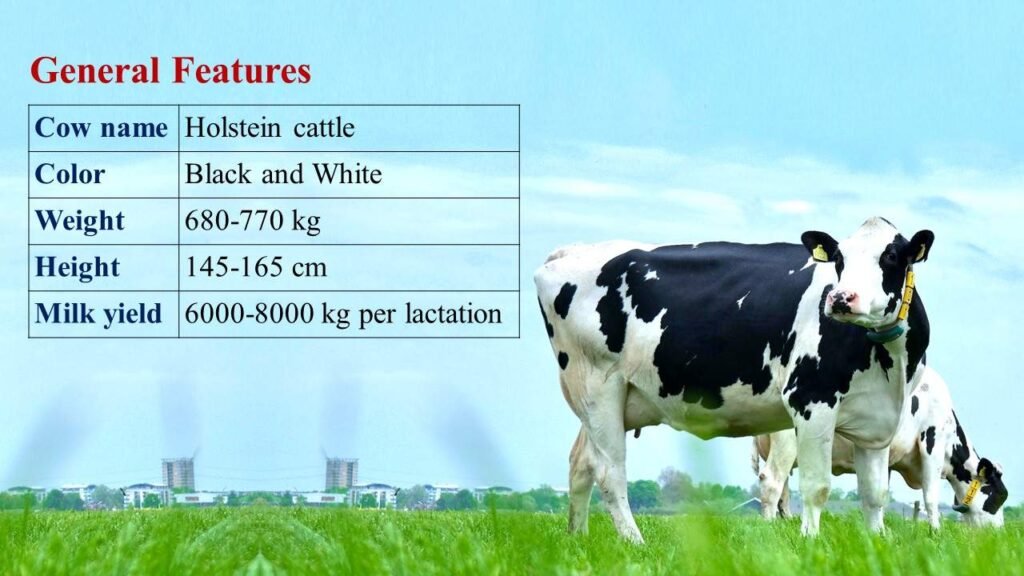
General Features of HF cow
| Origin | Holland, Denmark, and Germany |
| Other names | Holstein cattle, Friesian cattle, and Black and White |
| Use | Dairy |
| Color | Black and White |
| Horns | Horned, but dehorned as calves |
| Weight | 680-770 kg |
| Height | 145-165 cm |
| Milk yield | 6000-8000 kg per lactation |
| Fat percentage in HF cow breed milk | 3-3.5% |
| First calving | 21-24 months of age |
| Gestation period | 9-9.5 months |
| Inter-calving period | 1.5 to 2 months |
| HF cow calf weight at birth | 40-50 kg |
| Normal productive life | 6 years |
Visual Appearance
The HF breed cow is the largest dairy cattle breed in the world. The pure holstein friesian cow breed is easily distinguishable by their black and white coat color. Some variants possess red and white coats but black and white is the predominant color.
The cow is an exotic dairy breed, so they do not possess hump. They are thin and more angular than beef cattle. They are ruggedly built and possess large udder. The hindquarters of the breed form a funnel-type angle of the pelvis to the butts, forming what is called ‘funnel butts’ a characteristic feature of the breed.
HF have long and narrow heads and a long nose bridge. They are naturally horned animals but sometimes the holstein friesian cow baby is dehorned. The horns, if present are small and curve forward.
On average the breeds weigh 680-770 kg and are the largest dairy cattle breed. They are bigger than other prominent European breeds like Jersey, Brown Swiss, Guernsey, and Randall. The height is about 145-165 cm which is significantly tall regarding dairy breeds. Although the bone density is higher and muscle and fat are lower in the body, they appear muscular. The females give birth to healthy H F cow calf that weighs 40-50 kg. The heaviest holstein friesian cow breed has recorded a weight of 1.3 tonnes.
The HF cows are the least heat-tolerant breeds and hence are difficult to survive in hot and dry areas. So cross-breeding programs are done in high-range areas that are more adept for breeds like HF cow in Kerala, Punjab HF cow, and other similar breeds.
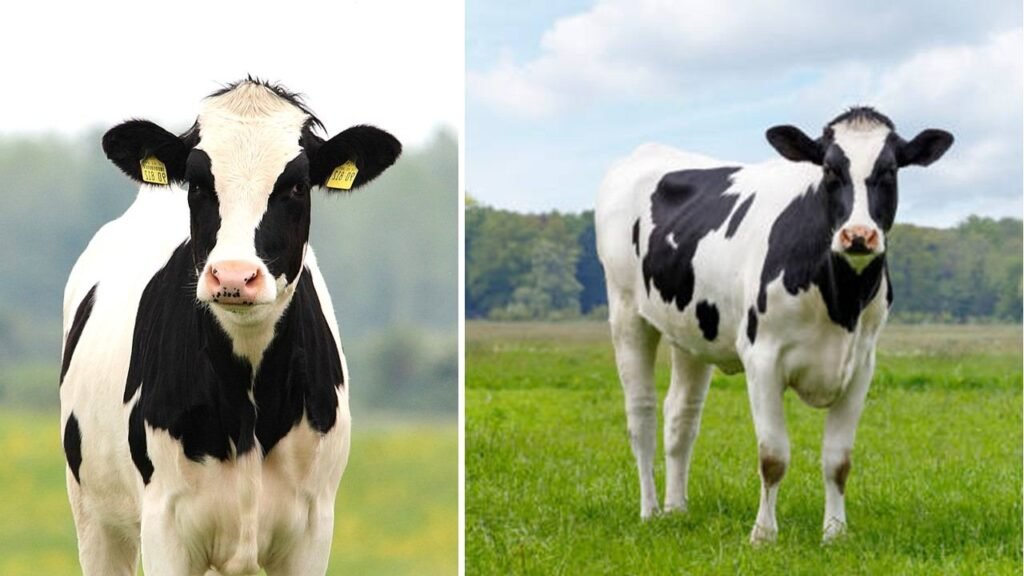
Also Read
- Top 10 Exotic Breeds of Cattle: Breeds & Characteristics
- 20 Indian Cattle Breeds: Types of Cows in India
Calving and Lactation
The HF heifers (young female cows that haven’t calved yet) should be bred by 11 to 14 months of age. It is the age when the heifers reach 55 % of their body weight (300 to 350 kg). Generally, breeding operations are planned so that the Heifers can calve for the first time between 21 and 24 months. During this time, the heifer would have attained 80% of the mature adult body weight of 550 to 600 kg.
The gestation period of the breed is 9 to 9 ½ months. The inter-calving period of the breed is 1.5 to 2 months which is the resting period.
HF Cow Milk per Day | Friesian Cow Milk Per Day
HF cows milk per day is most searchable query all time. Hf cow is the highest milk producing cattle breed in the world. On average, the holstein friesian cow produces 6000-8000 kg milk per lactation period of 305 days. The HF cow gives around 40 kg of milk per day. In a year the breed can produce 9000 kg of milk.
The Brown Swiss and Jersey are the second and third best milk producers with 6000 kg and 5000 kg milk production per lactation period on average.
The HF cows give milk 2 to 3 times a day. The fat percentage in HF cow milk is only 3 to 3.5 percent. On average the breed produces 9000 kg of milk and in it the butterfat content will be 250 to 300 kg and the protein content is 250 to 270 kg.
These significant nutritious milk yields require proper feeding with 50 kg of food per day. The feed should have hay, silage, grains, soy meal, vitamins, and minerals. The normal productive period of the breed is 6 years.
HF breed shows a decrease in lactation as time passes. During the first lactation (initial 2 months) the breed produces 35 to 40 liters of milk per day. The milk production in HF then decreases to 30 liters per day at the end of the first lactation period. During the subsequent lactation period, the initial production was 32 to 35 litres per day which reduces to 25 litres per day. So the total production during the lifetime of an HF cow ranges between 25 to 40 litres per day.
HF cow price in India | Holstein Friesian price in india
The HF cow price in India depends on age, lactation status, milk production, and pregnancy status. The HF cow price in Maharashtra (almost similar to the rest of India) for a cow yielding anywhere in the range of 10 to 15 liters of milk per day is between ₹40,000 to ₹60,000.
For HF cows that can produce 20 liters and above milk per day, the price will be more than ₹60,000. The HF cow calf price in India is around ₹20,000 to ₹50,000 based on the quality of the calf and the quality of the mother.
Management of HF cows
Climate and Housing
Holstein-Friesian cows originated in European countries with cool temperate climates. So these breeds require cool temperatures to survive.
The cow shelters should have proper ventilation, cleanliness, and adequate water supply. The cows should be washed properly daily.
Feed
The cows require nutritious diet composed of concentrates, roughage, and minerals. The cow’s age, weight, lactation status, and milk production need to be taken into account while formulating the feed.
Hay, silage, and green fodder which are roughages should be in higher concentration in the feed whereas concentrates like grains and oil cakes must be included in lower concentration. Diet supplements containing vital minerals like calcium, phosphorus, and magnesium should be fed to the animals to improve milk production and its content.
Disease Management
The most common diseases found to affect HF cows are:
| Sl. no | Disease | Causal Organism | Major Symptoms |
| 1 | Foot and mouth disease | Picorna virus | Drooling of saliva Vesicles in tongue Rough coat with long hair Loss of appetite |
| 2 | Anthrax | Bacillus anthracis | Alarming rise in body temperature Period of excitement followed by depression Respiratory or cardiac distress and shivering Bloody discharge from natural body openings |
| 3 | Black quarter | Clostridium chauvoei | Fever, anorexia, and ruminal tympany Swelling of throat Thighs with muscle stiffness |
| 4 | Tetanus | Clostridium tetani | Restricted movement and muscle stiffness Decrease in milk yield LockjawPump handled position of the tail |
| 5 | Mastitis | Streptococcus, staphylococcus, and Coliform bacteria | Hot, swollen, and painful udder with yellow secretions Cessation of milk secretion Milk becomes blood-stained and contains pus |
Disease control
- Provide well-ventilated and proper housing
- Provide balanced nutritious diet
- Strict hygiene and sanitation of animal houses
- Adhere to regular and routine ‘vaccination’ schedule
- Avoid entry of outsiders within the farm premises
- Follow up on the latest scientific know-how and management practices.
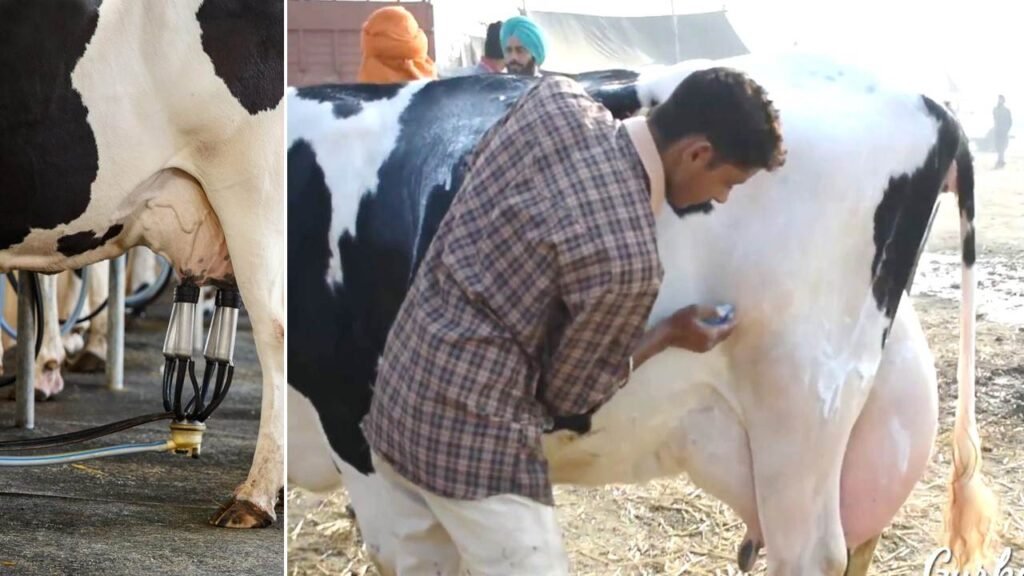
Breeding
Breeding is crucial for maintaining the genetic vigor of Holstein Friesian cows. For HF cows we can follow the method of Artificial Insemination (AI) or natural mating for breeding the cows.
Artificial Insemination is the method of artificially collecting semen from a desirable male parent (bull) and injecting it artificially into the female cow.
Artificial Insemination is a superior and favorable process as it allows farmers to choose high-quality semen from bulls that result in good-quality HF cow baby.
The selection of the male parent (bull) should be done cautiously. The genetic characteristics desirable for a bull for Artificial Insemination are
- Milk production
- Disease resistance
- Adaptability to Indian climatic conditions
The estrus cycle should be monitored closely to understand the right time to go for Artificial Insemination. After the procedure, the HF female cows should be checked for pregnancy. Providing nutritious feed, hygiene, regular medical checkups, and other management practices should be done to ensure good health and development of the fetus.
They should be given separate stalls after birth. The HF cow calves should receive their first vaccination at 6 to 8 weeks of age. The subsequent vaccination dose must be given 4-6 weeks after the first vaccine dose.
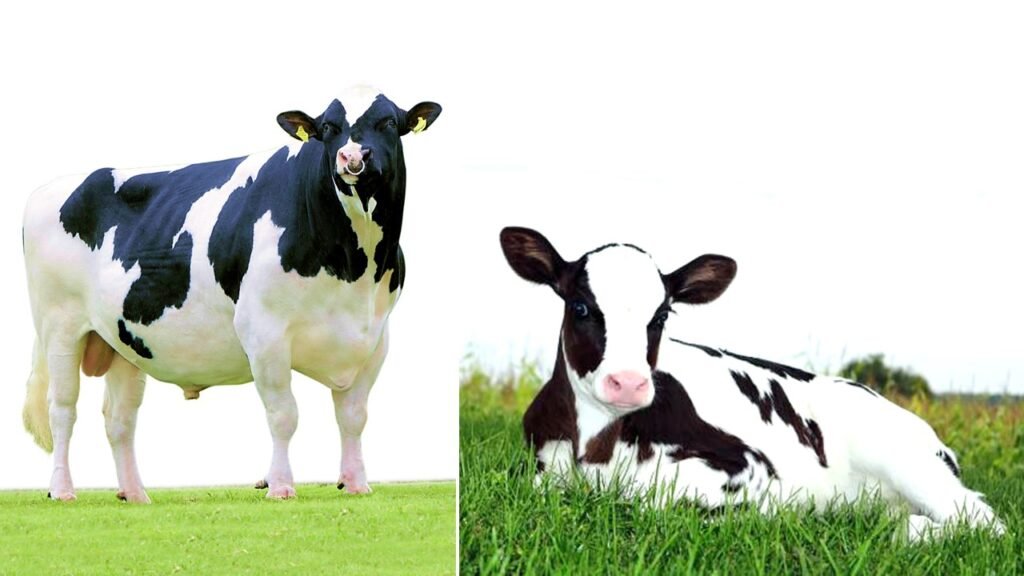
Conclusion
As we have mentioned multiple times in this article, the Holstein Friesian is the best dairy breed in the world. Now HF is used throughout the country because of its high milk production. However, one thing must be considered here. The HF is an exotic breed native to the Netherlands which has a temperate climate. So, the imported breeds will find it difficult to acclimatize in the tropical Indian conditions. Hence it is essential to ensure proper housing facilities with adequate ventilation for the breeds. Along with it a bit of feed, disease, and breeding management would surely make HF cow farming a fruitful venture.
Latest Post
- October Issue 2025- Times of Agriculture Magazine
- Top 10 Pesticide Companies in the World
- September Issue 2025- Times of Agriculture Magazine
- Top 15 Fertilizer Companies in the World
- Top 10 Vegetable Farming Profit Per Acre in India
- August 2025 : Times of Agriculture Magazine (AgriVoltaics Farming)
- Button Mushroom Farming: Infrastructure, Cultivation, and Profitability
- Sahiwal Cow: Characteristics, Milk per Day, Price and Origin
- July 2025 : Times of Agriculture Magazine


